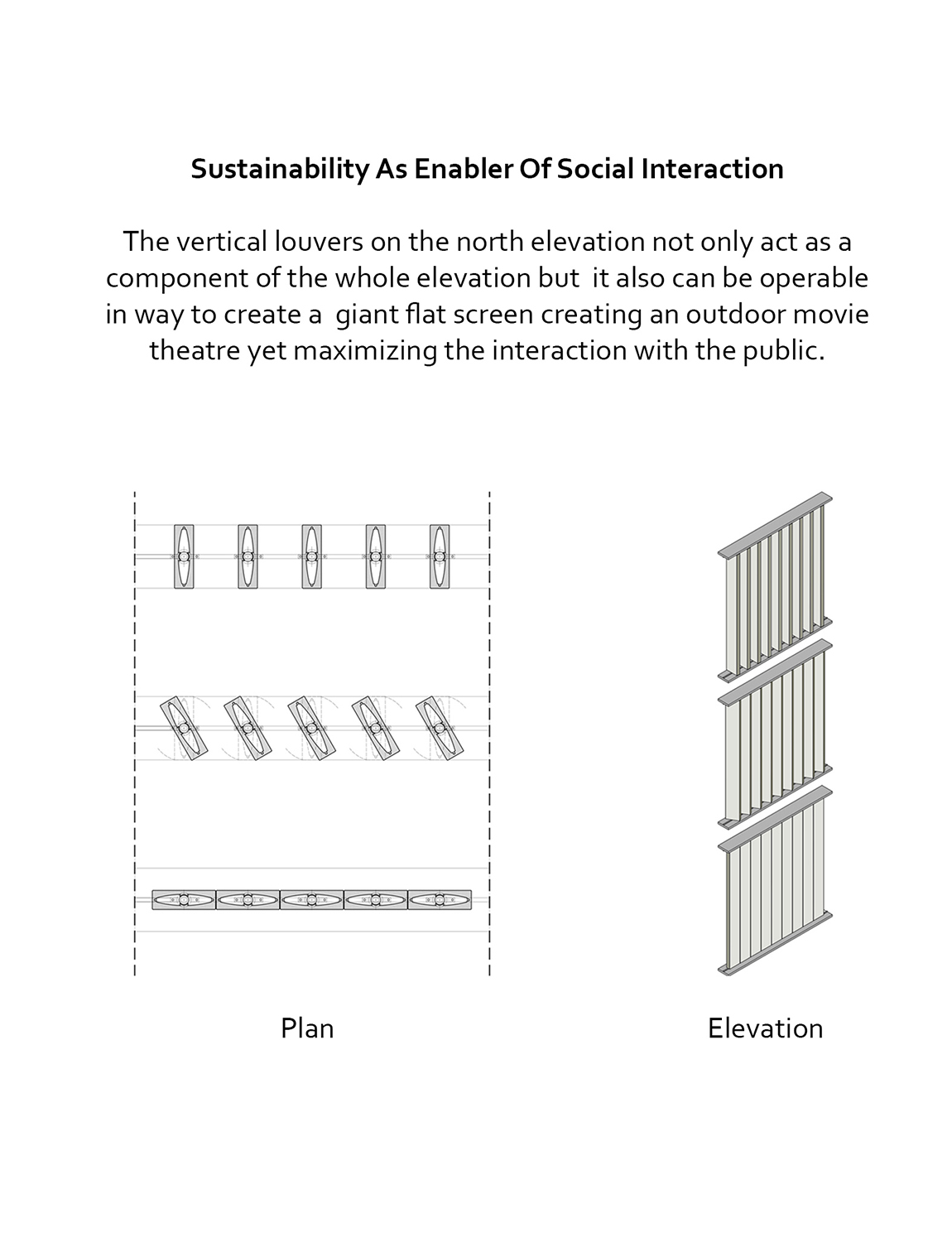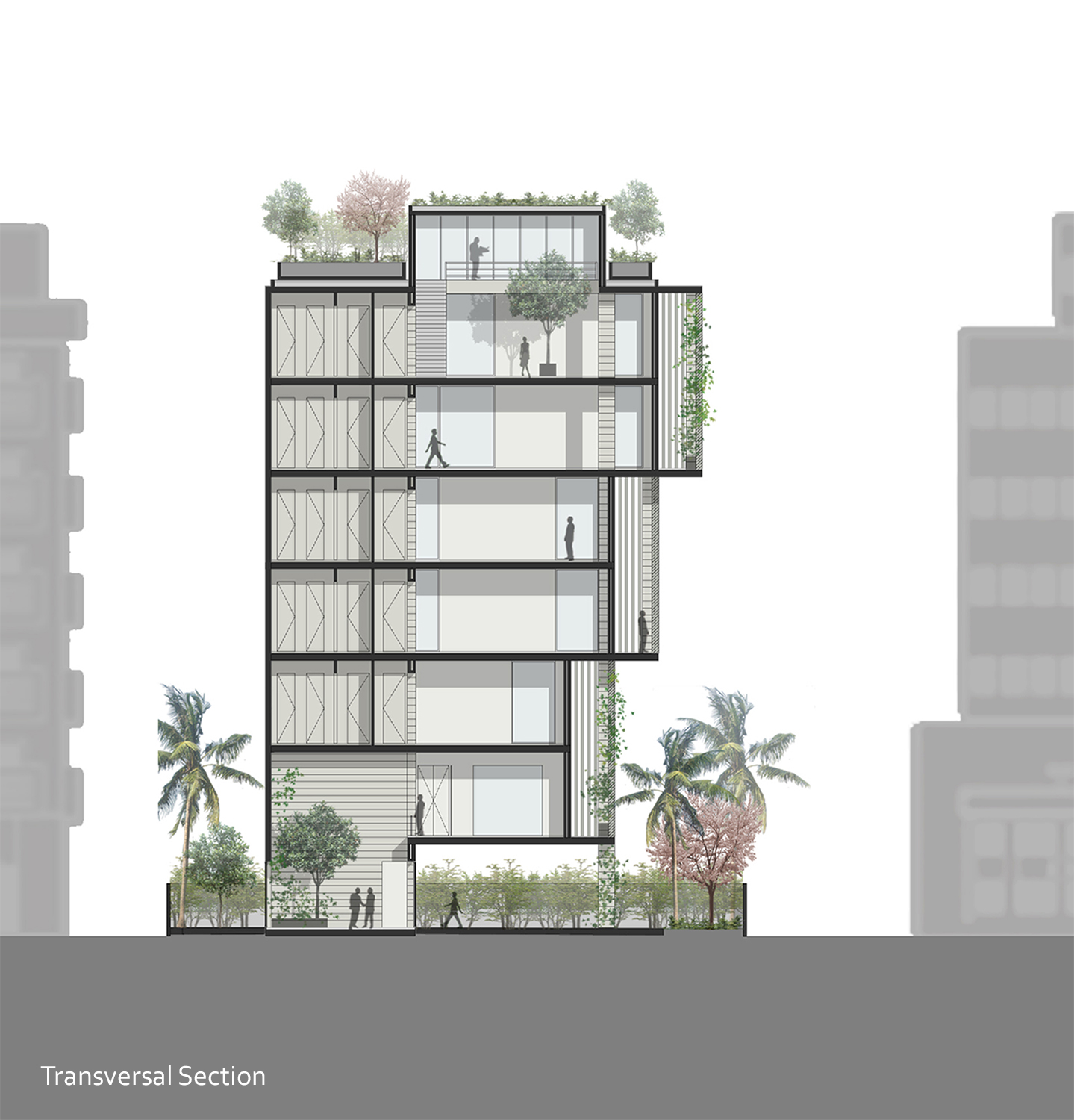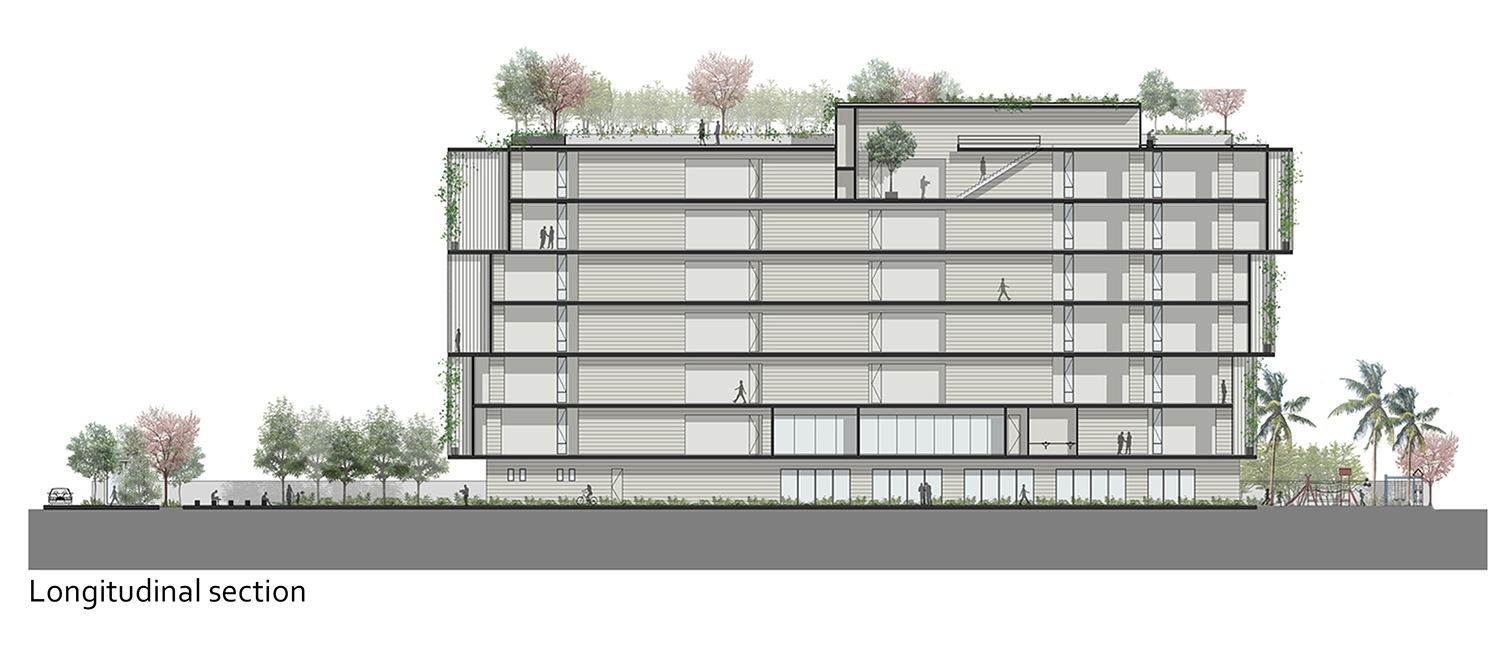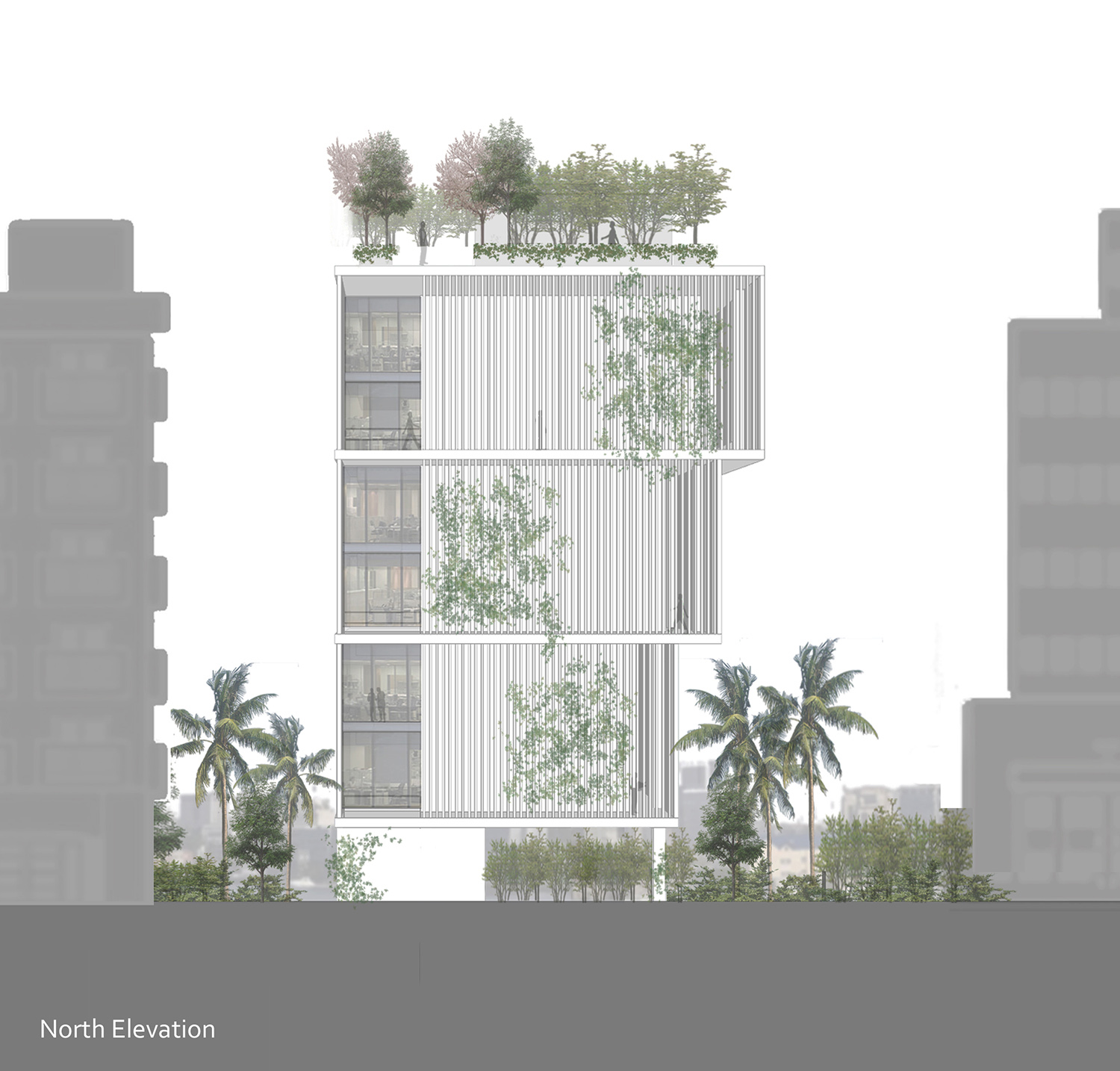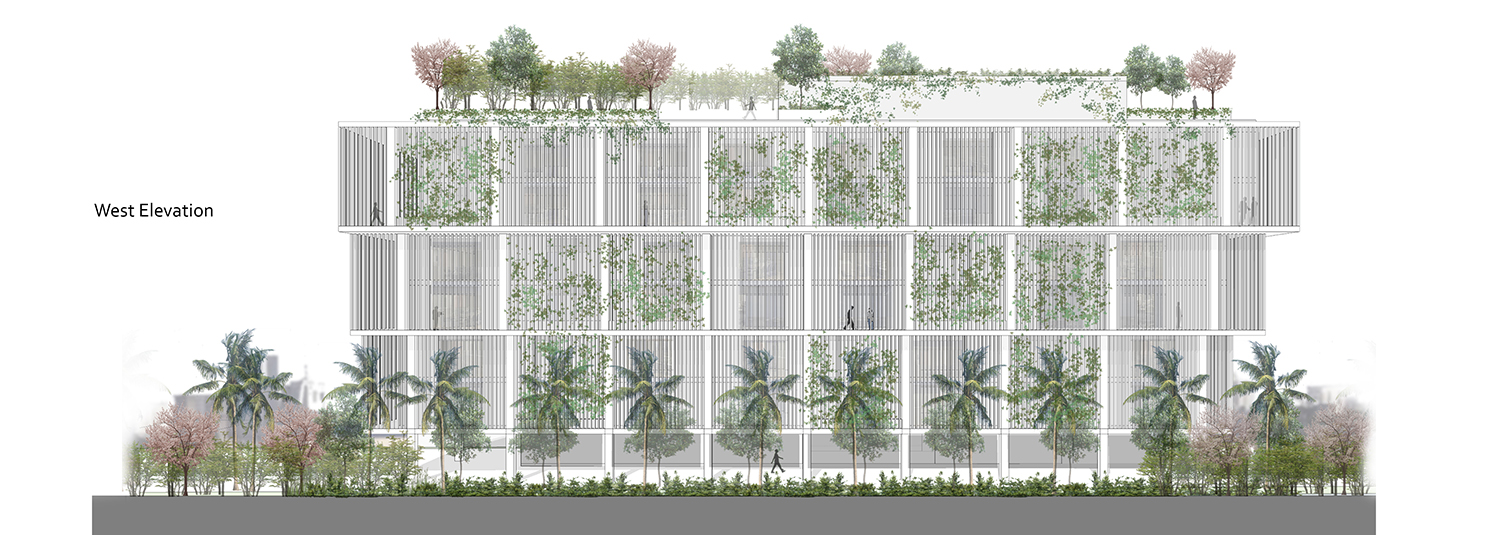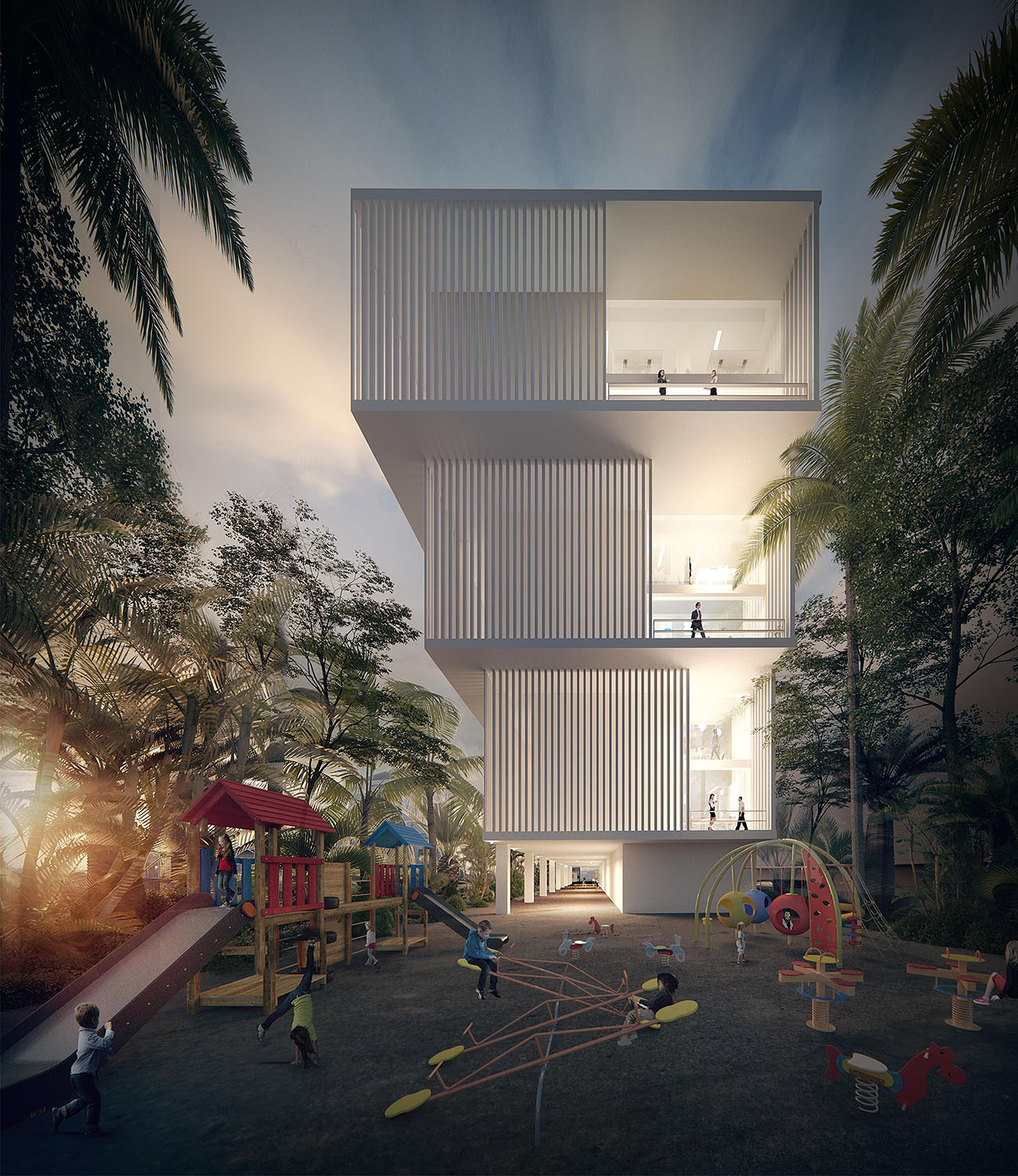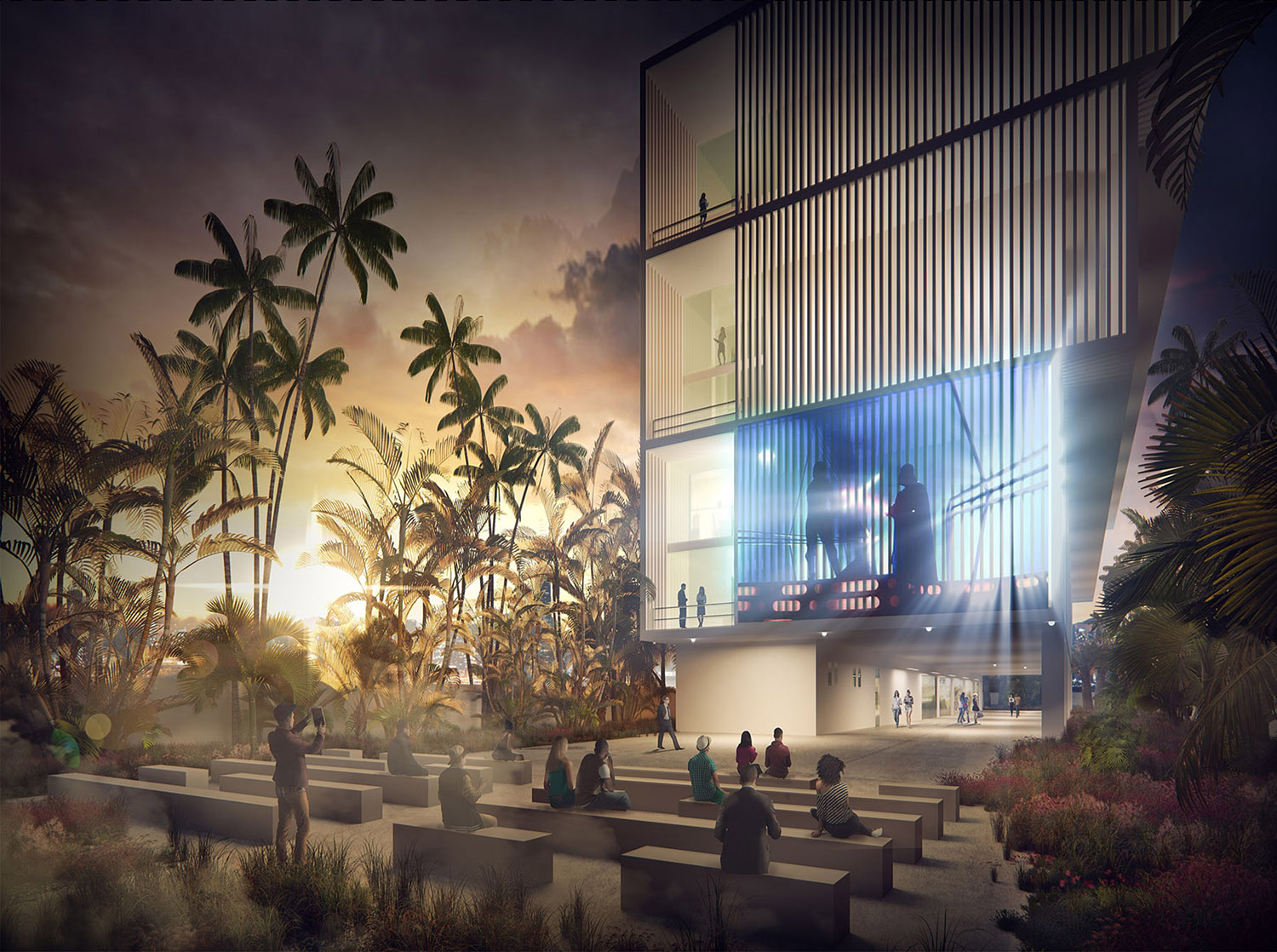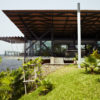SYNOPSIS
[dropcap size=big]O[/dropcap]tunba Offices is a proposed commercial office building designed by Domaine Public architects for the city of Lagos, Nigeria which seeks to use context and Natural climate as generative tools to challenge the prevalent office building typology and enable a flexible, affordable and spatial massing prototype despite budget constraints.
The architect’s 8000 sqm design literally turns the typical office typology on its head with an inverted spatial massing that aids in reducing the building’s footprint while maximising both useable office space and outdoor public space. This inverted volume also optimises air flow around the structure while facade of sun shading screens helps regulate sun intensity along with the overhangs that are generated due to the inversion.
PROJECT DESCRIPTION
[dropcap size=big]R[/dropcap]ecent office developments in Lagos embrace architectural form merely as image-making, marketing tools for those infatuated with novelty. Developers revert to “pancake buildings” with repetitive floor plates and façades adorned with busy patterns with no function. With financial gain as a goal, image and show take precedence over spatial experience.

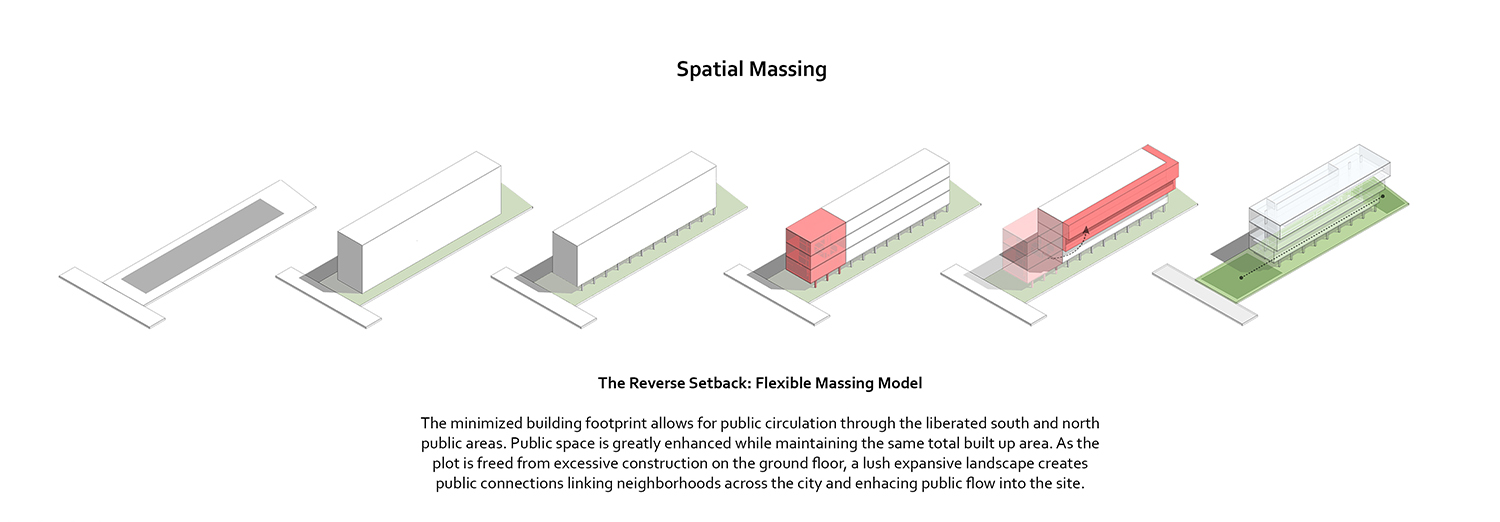
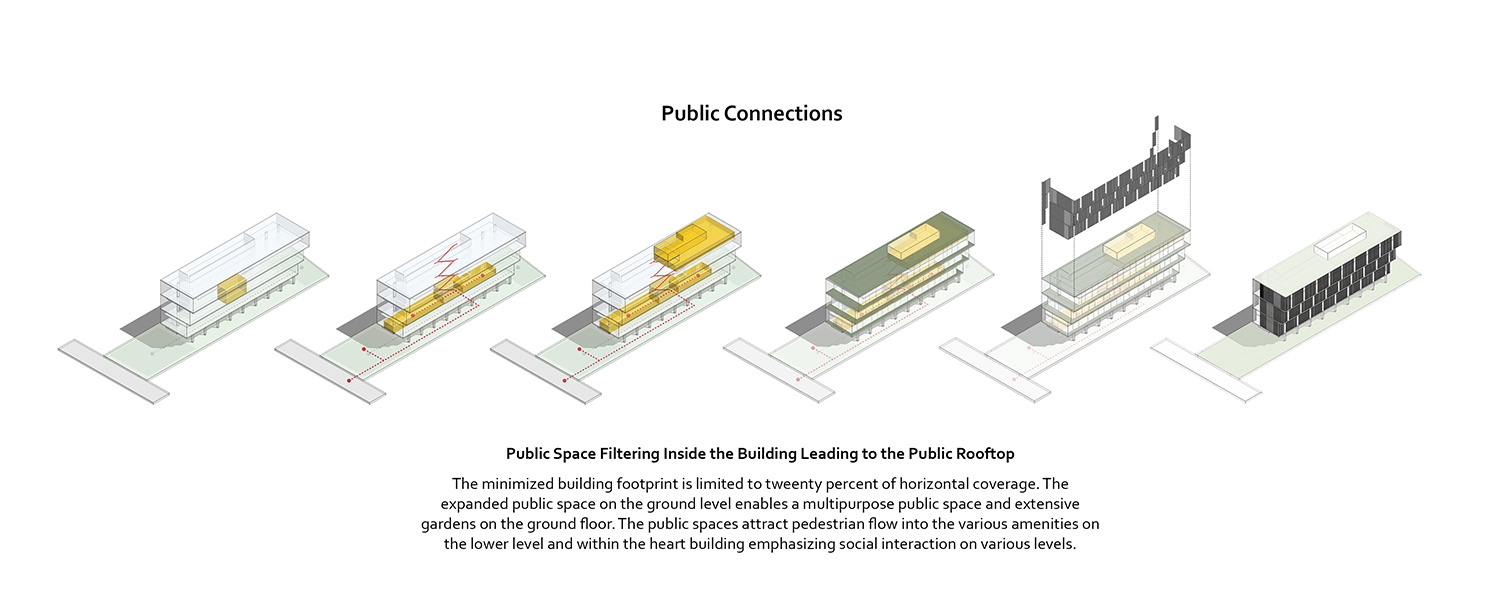
The Otunba offices adopt strict budget constraints yet utilize context and natural climate as generative tools to challenge the prevalent office building typology embraced by developers. The minimum building footprint allows for air to circulate below the offices creating a natural wind tunnel effect. The plot is also freed from excessive construction, enabling instead a lush expansive landscape that absorbs excess rainwater in the tropical climate of Nigeria. The building volume expands every two floors on both the south and east facade, creating a volumetric brise-soleil shading the offices below, and protecting from the tropical rain. The lush landscape can be accessible by the residents regardless of the prevailing weather conditions.

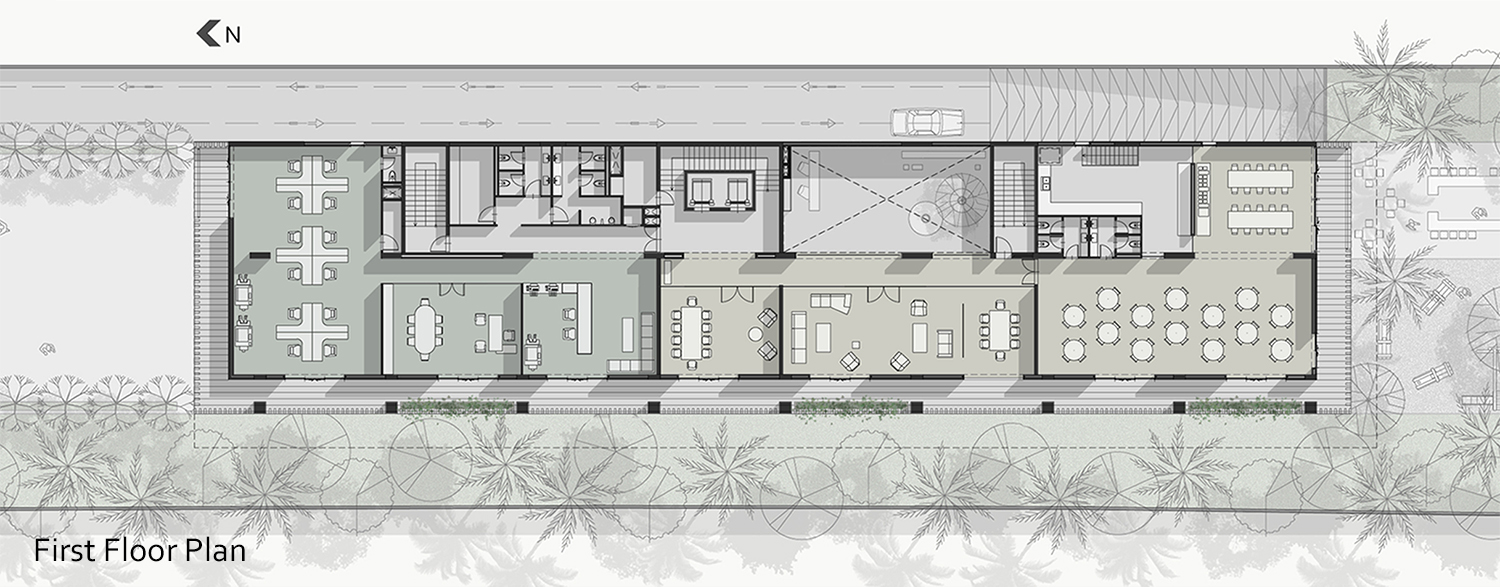
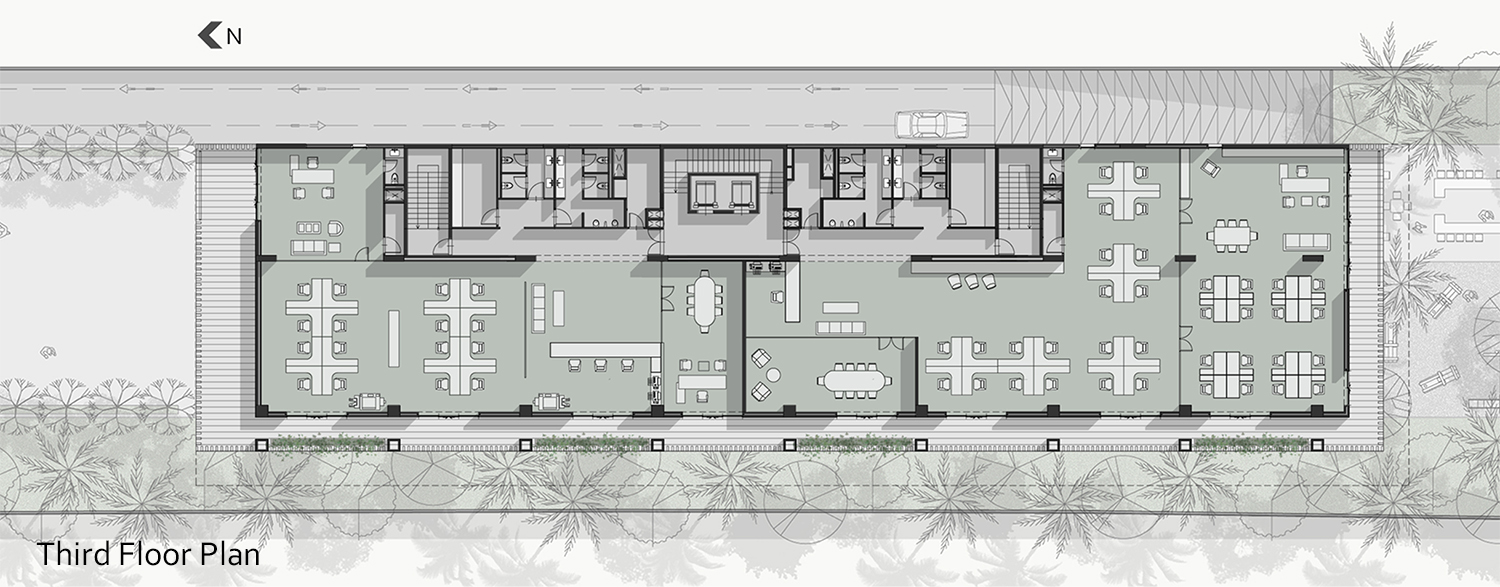
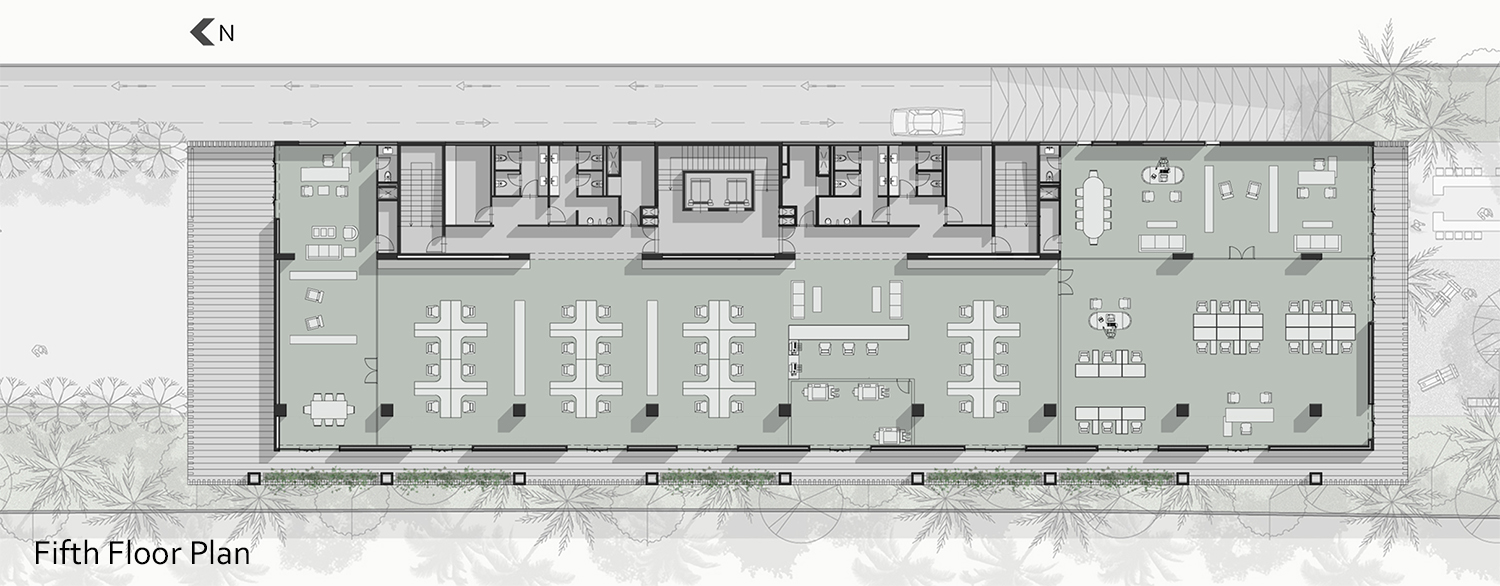
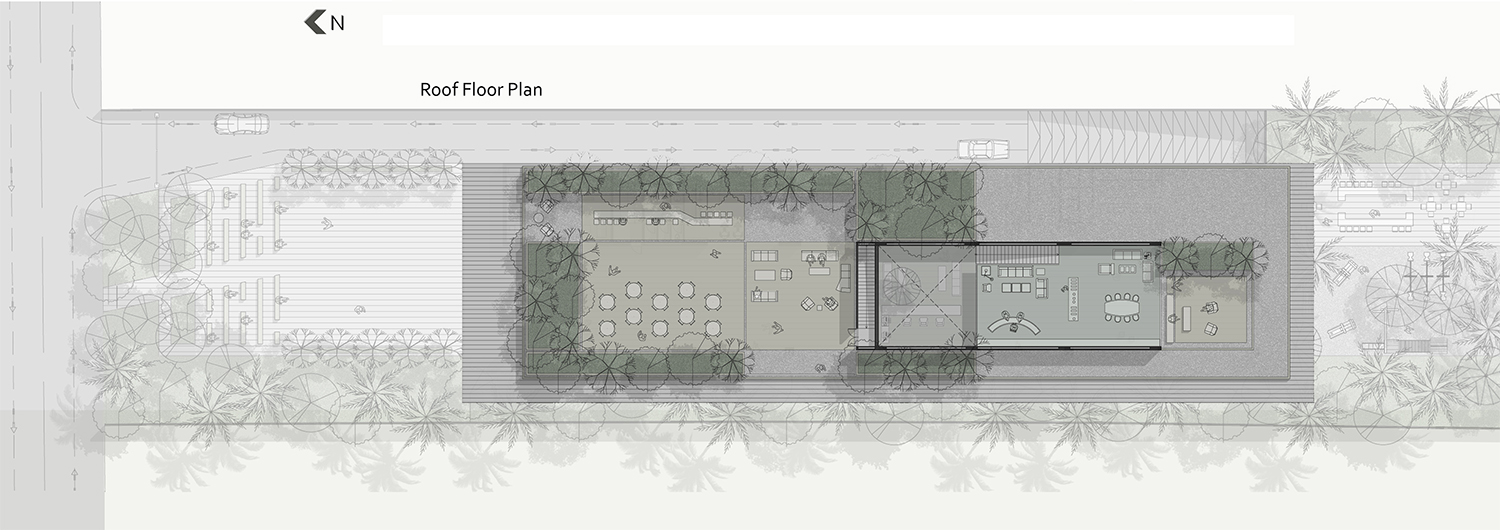
The series of growing floor plates result in a variety of office types for different tenants and different sized companies. This also benefits the developer, as upper floors yield better rental value. A strip of balconies shielded by a second skin of vertical louvers allows for both additional shading on the east façade and for natural ventilation across the building length. The vertical louvers play a dual role as they also conceal the low-cost technical equipment needed on each floor, without resorting to high-cost electro mechanical solutions. The west façade is shielded by a layer of coconut trees and comprises minimal openings to enable natural ventilation yet limit heat gain. The north façade visible from the highway is a flat yet striking silhouette outlining the staggering strategy, a unique yet highly functional form that stems and carefully responds to the natural and environmental context.

